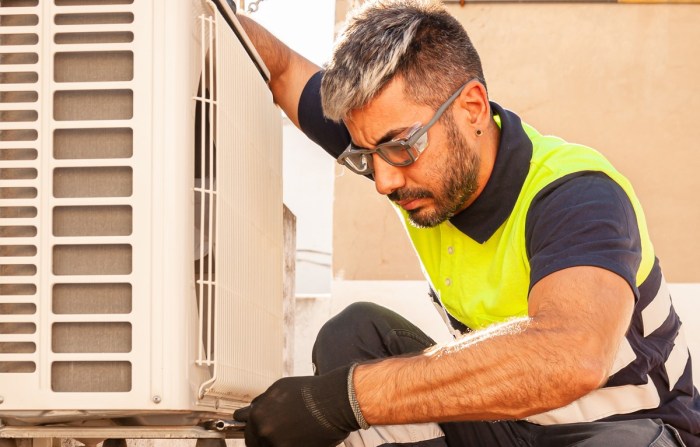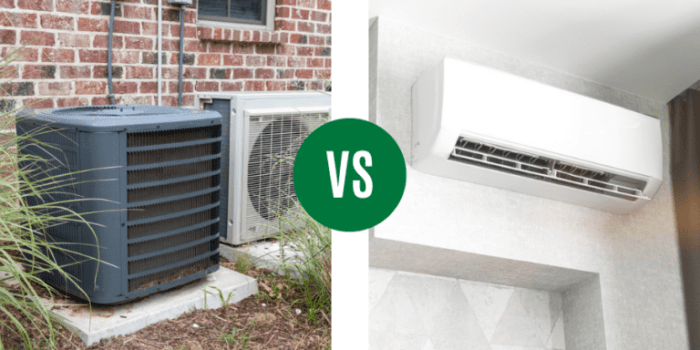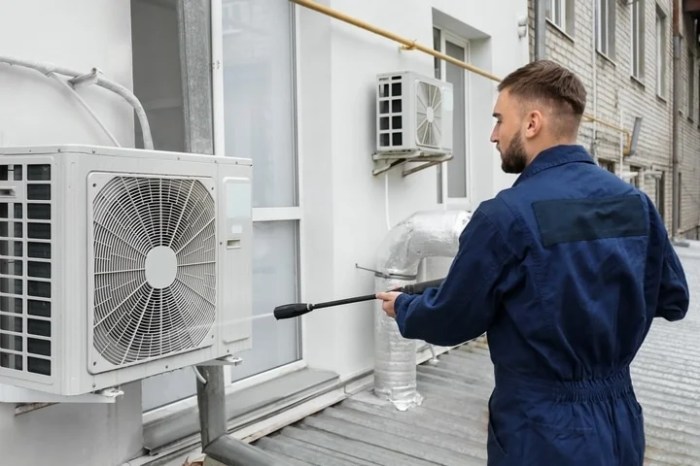Air Conditioner Installation Costs: What to Expect
When it comes to Air Conditioner Installation Costs: What to Expect, understanding the various factors and types of systems can make a significant difference in your decision-making process. Let's delve into the details to give you a comprehensive overview of what to anticipate when considering air conditioner installation costs.
The following paragraphs will provide detailed insights into the factors influencing costs, types of air conditioning systems and their installation costs, average cost breakdown, ways to reduce expenses, and more.
Factors influencing air conditioner installation costs
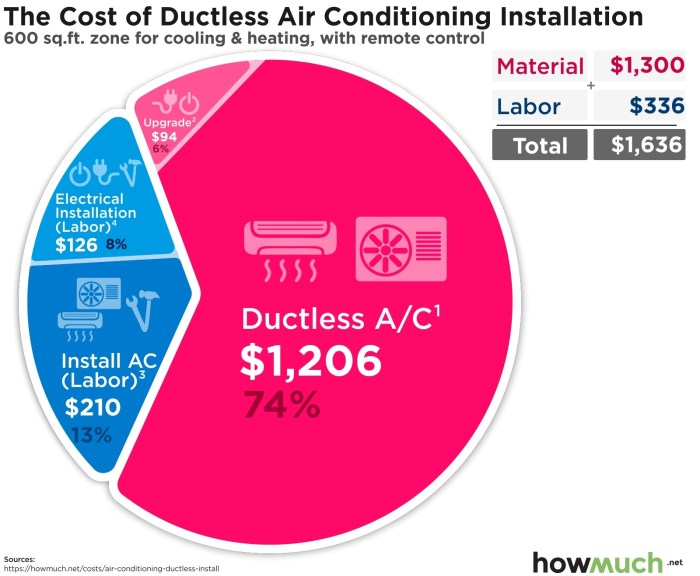
When it comes to installing an air conditioner, there are several factors that can influence the overall cost. Understanding these factors can help you prepare for the expenses involved and make informed decisions.
Size of the unit
The size of the air conditioner unit plays a significant role in determining installation costs. Larger units typically require more work to install, including additional materials and labor. As a result, the cost of installing a larger unit is generally higher compared to a smaller unit.
Complexity of the installation
The complexity of the installation process can also impact the overall cost. Factors such as the layout of your home, the need for ductwork modifications, or the installation of additional components like a thermostat can increase the complexity of the installation.
This complexity can lead to higher installation costs.
Location
The location where the air conditioner will be installed can affect the cost as well. For example, if the unit needs to be installed on a rooftop or in a hard-to-reach area, additional equipment or labor may be required, leading to higher installation costs.
Additionally, local permit requirements and regulations can also impact the overall cost of installation.
Additional factors
In addition to the size of the unit, complexity of the installation, and location, there are other factors that may contribute to variations in installation costs. These factors include the type of air conditioner being installed (central AC, ductless mini-split, etc.), the efficiency rating of the unit, and any additional services or upgrades requested by the homeowner.
Types of air conditioning systems and their installation costs
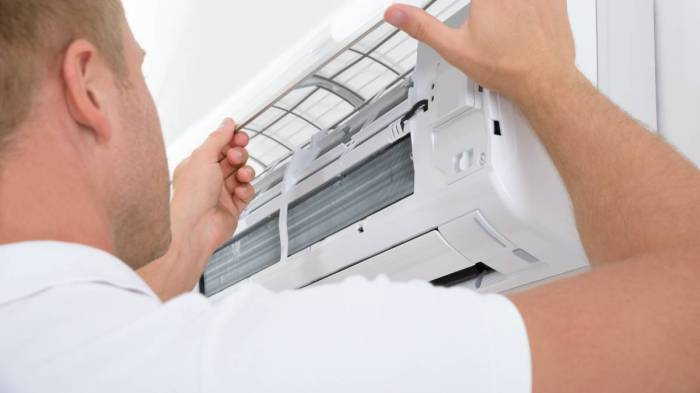
When it comes to air conditioning systems, there are several types available for installation, each with its own set of pros and cons. Understanding the installation costs associated with different systems can help you make an informed decision based on your needs and budget.
Central Air Conditioning
Central air conditioning systems are a popular choice for cooling larger homes or buildings. The installation costs for central air conditioning can vary depending on factors such as the size of the space, ductwork requirements, and the efficiency of the system.
On average, the installation cost for central air conditioning can range from $3,000 to $7,000 or more. While the initial cost may be higher, central air conditioning systems provide even cooling throughout the space and can increase the overall value of the property.
Ductless Mini-Split Systems
Ductless mini-split systems are a versatile option for cooling individual rooms or smaller spaces without the need for ductwork. The installation costs for ductless mini-split systems are typically lower than central air conditioning, ranging from $2,000 to $5,000. These systems are energy-efficient, easy to install, and provide customizable cooling solutions for different areas of the home.
However, the upfront cost per unit can be higher compared to window units.
Window Units
Window air conditioning units are a budget-friendly option for cooling single rooms or apartments. The installation costs for window units are generally the lowest, ranging from $150 to $500 per unit. While window units are easy to install and cost-effective, they may not be as energy-efficient as central air conditioning or ductless mini-split systems.
Additionally, window units can obstruct natural light and views from windows.Overall, the type of air conditioning system you choose will impact the installation costs, energy efficiency, and overall comfort of your space. Consider your specific needs and budget when deciding on the best option for your home or building.
Average cost breakdown for air conditioner installation
When it comes to the average cost breakdown for air conditioner installation, it's essential to consider various factors that contribute to the overall expenses. These costs typically include purchasing the unit, labor expenses, materials, and any additional fees. Let's dive into the breakdown to understand how each component impacts the total installation cost.
Cost Breakdown Components
- Purchasing the unit: This is often one of the most significant costs involved in air conditioner installation. The price of the unit itself can vary based on the brand, size, and energy efficiency rating. On average, the cost of the unit can contribute to around 40-50% of the total installation cost.
- Labor expenses: Hiring professional technicians to install the air conditioner is another essential cost to consider. Labor expenses can vary depending on the complexity of the installation, location, and the company hired for the job. Typically, labor expenses account for about 30-40% of the total installation cost.
- Materials: Apart from the unit itself, additional materials such as ductwork, refrigerant lines, and electrical components are necessary for a proper installation. The cost of materials usually makes up around 10-20% of the total installation cost.
- Additional fees: There may be additional fees associated with permits, inspections, or any modifications required during the installation process. These fees can vary based on local regulations and specific installation needs, contributing to approximately 5-10% of the total installation cost.
Ways to reduce air conditioner installation costs
When it comes to installing an air conditioning system, there are several strategies you can use to reduce costs. Whether you're considering a DIY approach or looking for energy-efficient models, these tips can help you save money in the long run.
Consider a DIY Installation
If you have some experience with HVAC systems and feel confident in your abilities, opting for a DIY installation could significantly lower your costs. However, it's crucial to carefully follow the manufacturer's instructions and ensure you have the necessary tools to complete the installation correctly.
Opt for Energy-Efficient Models
Investing in an energy-efficient air conditioning system may come with a higher upfront cost, but it can lead to substantial long-term savings. These models are designed to operate more efficiently, reducing your energy consumption and lowering your utility bills over time.
Look for units with a high SEER (Seasonal Energy Efficiency Ratio) rating to maximize your savings.
Shop Around for Competitive Quotes
Before committing to an installation service, make sure to obtain multiple quotes from different providers. This will allow you to compare prices and choose the most cost-effective option. Additionally, consider negotiating with the contractor to see if they can offer any discounts or special promotions to help reduce your overall expenses.
Maintain Your System Regularly
Proper maintenance of your air conditioning system can help prevent costly repairs and extend its lifespan. By scheduling routine tune-ups and cleaning services, you can ensure that your unit operates efficiently, reducing the risk of breakdowns and the need for expensive repairs down the line.
Take Advantage of Rebates and Incentives
Many utility companies and government agencies offer rebates and incentives for installing energy-efficient HVAC systems. Be sure to research available programs in your area and take advantage of any financial incentives that can help offset the initial cost of installation.
Closure
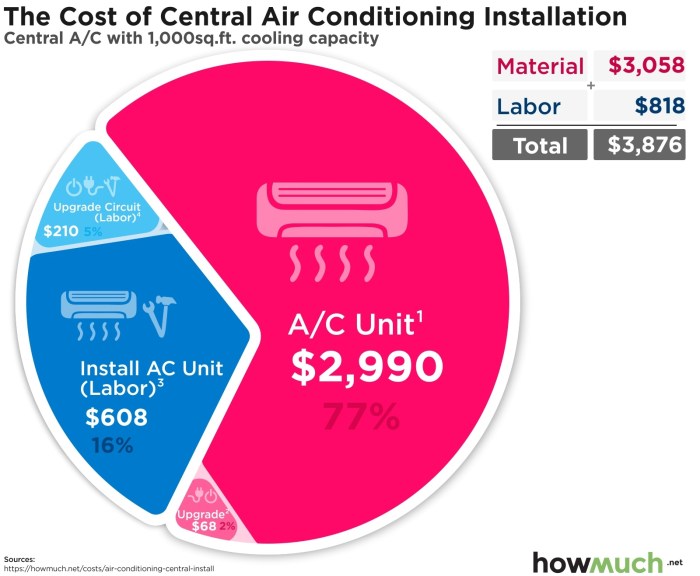
In conclusion, navigating the realm of air conditioner installation costs can be complex, but armed with the knowledge provided here, you are better equipped to make informed choices that align with your budget and needs. Whether it's understanding the factors at play or exploring cost-saving options, the key is to be prepared and proactive.
FAQ Overview
What factors can influence air conditioner installation costs?
Factors such as the size of the unit, complexity of installation, and location can all impact the overall cost of installing an air conditioner.
What are the common types of air conditioning systems and their installation costs?
Common types include central air conditioning, ductless mini-split systems, and window units, each with varying installation costs.
How can one reduce air conditioner installation costs?
Exploring DIY options, choosing energy-efficient models, and being informed about the breakdown of costs can all help in reducing installation expenses.
